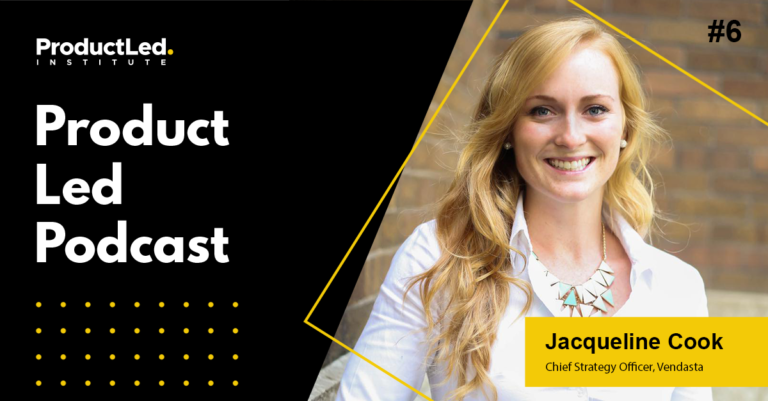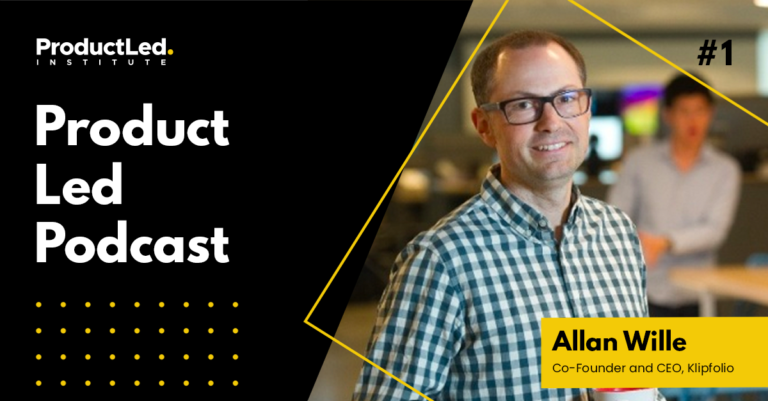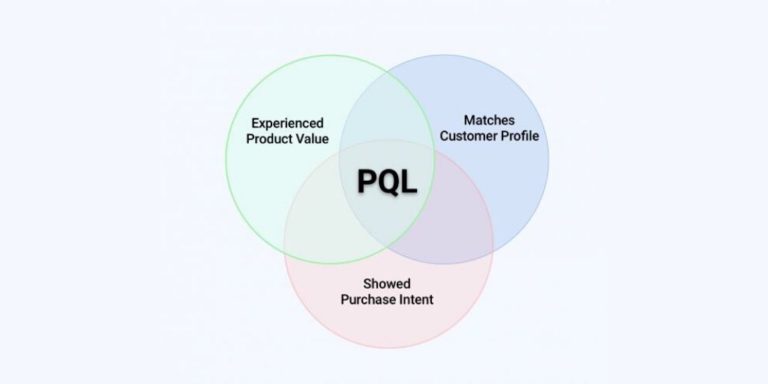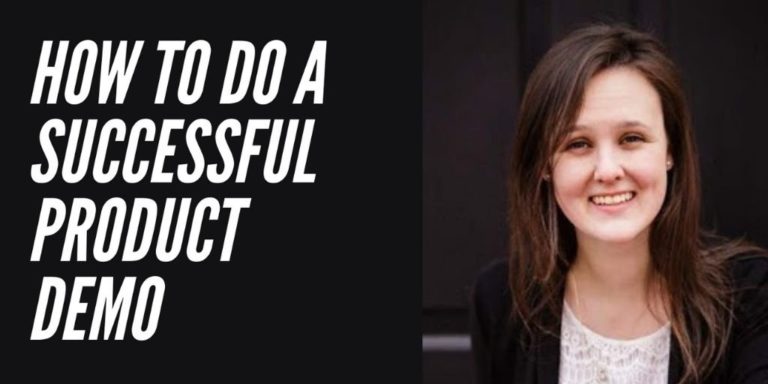In the product-led era, marketing has shifted, and the rules of the game have changed. It’s no longer enough to write a great case study, create a convincing website, and focus on generating MQLs.
In product-led companies, we need a better model of marketing.
In this article, I'll explain the how and why behind the shift to product-led marketing, where the primary means of user research is trying the product.
So, if you're struggling to create a marketing strategy that delivers results, aligns with your goals, and gets your teams working in harmony...
Hit play on the below video or read on.
Marketing is in crisis – it’s time for a new approach
According to the TrustRadius B2B Buying Disconnect Report, across 779 tech companies, the following were ranked lowest in terms of trustworthy material as part of the buying process: the blog, marketing collateral, and website.
At the top?
The buyer’s own experience with the product, a free trial, and referrals.
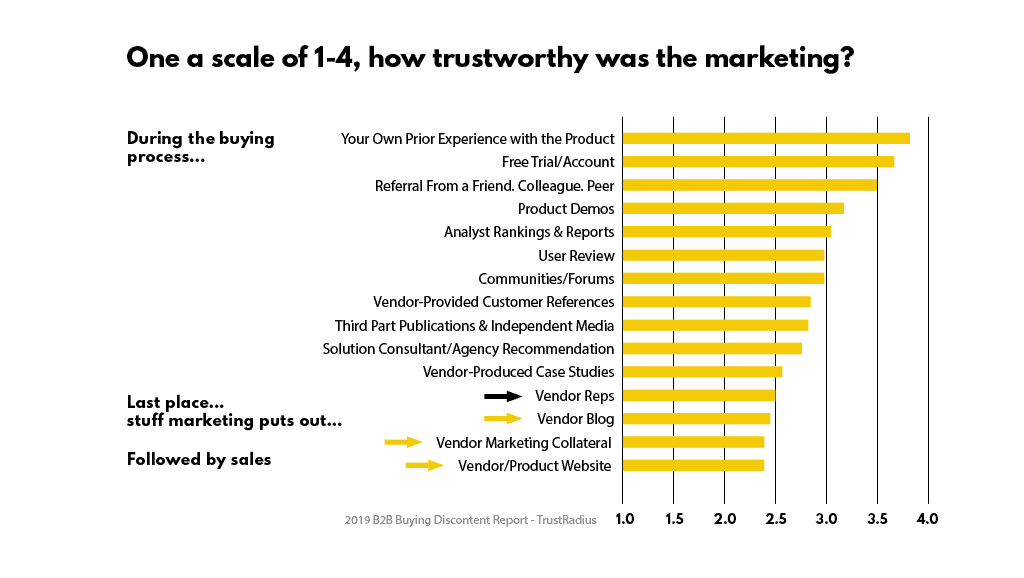
Even outside of the buying process, Hubspot has found that only 3% of consumers trust salespeople and marketers – that's level with investment bankers!
Anyone can create a good website and collateral, and buyers are savvy to the fact that marketers are more focused on putting their product in the best light, rather than clarifying whether it is the right fit for each use case.
This is a crisis of truth. Marketers are stretching reality and customers are sick and tired of having stretched reality sold to them.
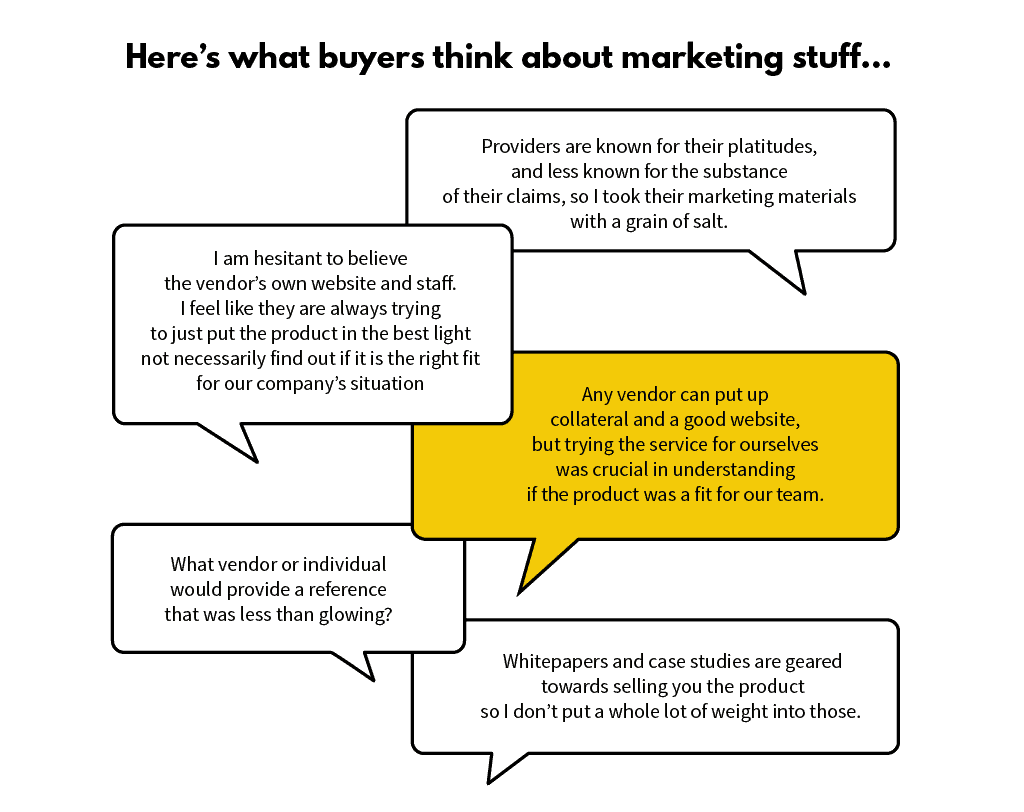
This old style of marketing operates on fear – fear of losing the lead’s interest, fear of losing to the competition, and fear of not reaching lead quotas.
Fear makes you lose focus. Your focus should only be on one place: the customer.
The best marketing is not your brand identity, studied messaging, website, award-winning campaign, or your case study. The best marketing is the actual experience customers have with the product and references from your customers.
And you can’t have the latter without the former.
So, what does the new model of product-led marketing look like? Forgive me if this sounds a little flowery, but we need marketing that is based on love. In trusting, forgiving, nurturing, and being supportive of your users.
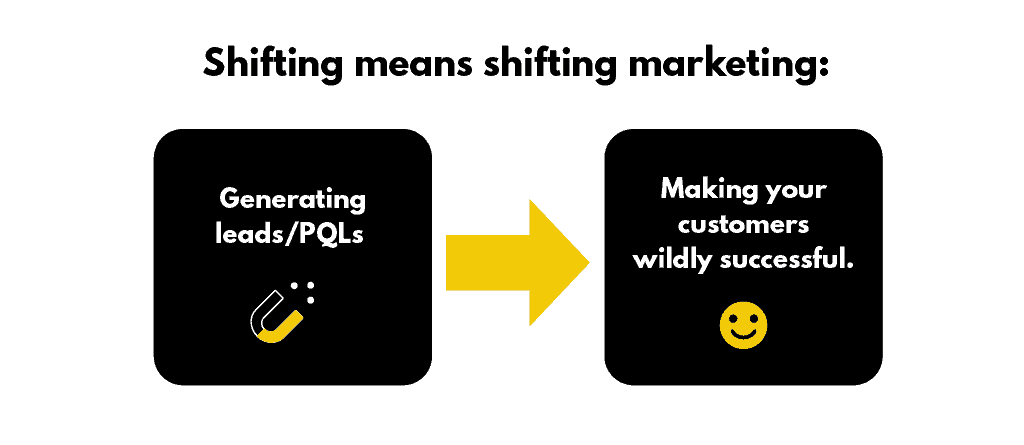
We have to shift marketing away from lead gen and MQLs to a laser focus on helping and making customers wildly successful.
6 Steps for building a product-led marketing model
There are six guiding principles we can take to start marketing with love, creating A better model for product-led marketing.
1. Gain a deep understanding of users’ problems
At the core of your product lies the customer – your product fits them, not the other way around. Your marketing is now customer-focused, remember!
The fastest, easiest, and most effective way to understand your users’ problems are to unearth the user stories that your product is designed around.

Put simply, user stories are a framing method to understand the specific problems your product is solving for users. They help you think about problems rather than marketing. A user story starts with identifying the person/their role, their want(s), and the outcome(s).
For example:
- As an SEO, I want to get Google to index my site, so I can get results from my SEO efforts faster.
- As a manager, I want to understand my colleagues’ progress, so I can better report our successes and failures.
Your product team very likely has a whole repertoire of these user stories.
If they don’t have suitable user stories, you can craft your own by analyzing:
- SEO (user searches)
- User behavior on site
- Customer onboarding process
- In-app product analytics
- Support tickets
- Top churn reasons
- User surveys and interviews
With product-led marketing, the marketing, sales, product, and customer success teams are no longer siloed. They are interwoven in a cohesive experience with the product at the center, and the customer at the center of the product!
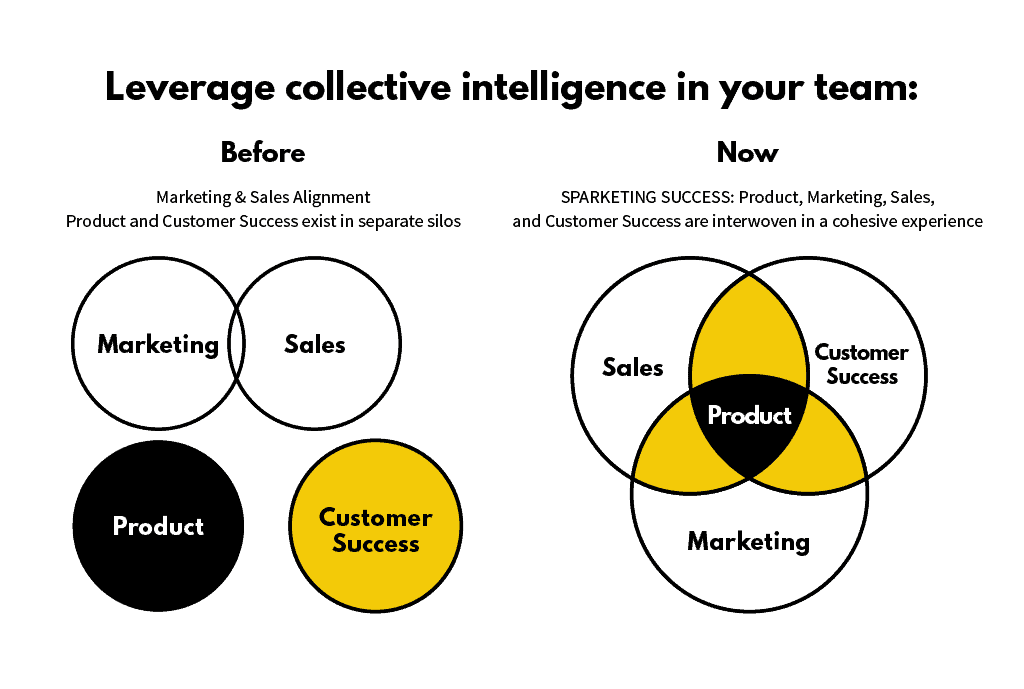
2. Focus your content on helping users solve problems
If you haven’t already, turn your blog into a repository for tips and hacks that show users how to solve their problems using your product.
Ahrefs’ blog is a perfect example of this in practice. Almost every post refers back to Ahrefs in the content, so while the articles may be explaining answers to broader SEO questions (alt text, page speed, etc.), they always find a way to naturally bring Ahrefs into the solution.
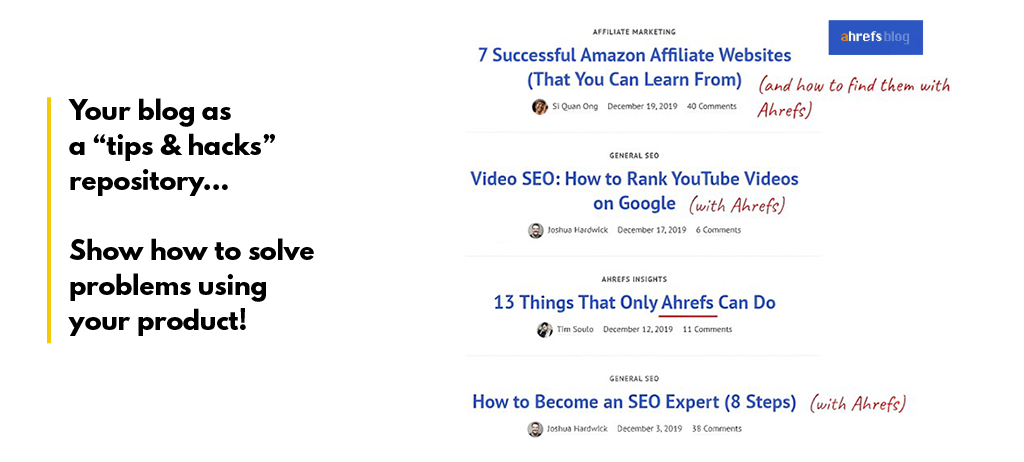
Learn your customers’ problems and address them in how-to articles, guides, tips for success, and other solution-focused content that will deliver value to your customers while presenting your product as the primary or complementary way of solving that problem.
3. Knowledge bases and learning centers
A knowledge base is a central hub that offers a deep dive into a topic of interest or key problem your product solves.
Organize your knowledge base by users’ most common issue and add case context openers to the top of your help articles (explaining who might need this kind of content and why it’s important).
This could even stretch as far as creating a course, ebook, or case study as a lead magnet. For example, ProductLed's Founder, Wes Bush, decided to give his bestselling book on PLG for free.
Your knowledge and expertise are no longer the most important element of the buying process – it’s all about the product – so giving away advice and guidance will not damage your chances of making a sale and will create a better customer experience.
If your blog posts are chapters, your knowledge bases and learning centers are books.
Set up a learning center to educate users about major topics of interest and show how to execute using your product.
4. Don’t forget about SEO
In creating knowledge bases, you’re establishing a content-rich hub of solutions and guidance.
Make sure you’re optimizing your content for search.
If optimized well, your knowledge bases should be a major source of traffic from SERPs – especially through featured snippets and answer boxes.
If your knowledge bases are answering the key questions that your user stories have, they should be answering those questions wherever your users find them – whether that’s on your site or on SERPs.
5. Embrace good, regular, and bad reviews
Reviews help you communicate everything. The most valuable reviews are the ones that include a healthy dose of cons to balance the pros.
Nobody is going to expect to see a list of negative outcomes or features of your product on your website. Consider it a given that your website is there for you to share the positives of your product.

Your reviews, then, are the place for honesty and for you to address real usage case issues.
Don’t shy away from user reviews – a great response to a user’s public review that lists issues will do more to sell your product than any number of case studies, sales pages, and testimonials.
6. Change your performance metrics
You can’t change the way your marketing function operates without changing the way you measure performance. If you try to, they will inevitably fall back to old habits to keep ticking the right boxes and meeting old KPIs.
For example, Slack stopped measuring:
- Marketing by number of leads
- Sales by number of leads closed
- Customer success by cost to serve
These drive the wrong behaviors – leads at any cost and revenue-first. Instead, to focus on customer happiness, they started measuring:
- Time to first response
- Customer satisfaction rate overall
- Net Promoter Score
- Daily active users
And the ultimate gold standard metric? User recommendations.
How product-led marketing can help your business grow efficiently
Product-led marketing is a go-to-market strategy that revolves around your product. It's a way to acquire, activate, and retain customers by using your product as the main vehicle. This approach is crucial for businesses that want to grow efficiently and survive in a market downturn.
By focusing on your product, you can create a seamless user experience that guides customers through the buying process. This not only improves customer satisfaction but also leads to higher retention rates and increased revenue.
PLG is really not a complex strategy. It's about designing your marketing tactics around your product and using it as a tool to attract and retain customers. By doing so, you can achieve PLG, which is the ultimate goal for any product-led business.
To learn more about product-led marketing and how it can help your business grow efficiently, check out our blog post on Growing Efficiently With Product-Led Marketing.
Ready to move to product-led marketing?
Then start with a simple question:
What is it going to take to make your top customers successful?
Once you know what it’ll take, put your best talent onto making it happen in a joined-up approach based on those principles.
Here’s a quick reminder of what product-led marketing is made of:
- Shift your marketing focus from generating leads to helping customers – treat marketing as an extension of Customer Success
- Gain a deep understanding of users’ problems – start by looking at the product team for user stories
- Focus marketing on creating helpful content for users looking to solve their problems – do so through the lens of your product
- Sniff out any fluff or stretched reality in your content and eliminate it
- Encourage reviews of all kinds
- Change your metrics to drive the right behaviors internally (from # of leads to NPS)

This is exactly the kind of reaction you want.
Marketing should be at the service of the product – to the point that it is unnoticeable, that it resembles help.
Tips for building a product-led marketing team
A product-led marketing team is all about leveraging the product to achieve business objectives. This approach requires a shift in mindset from traditional marketing methods.
Here are some key tips to consider when building a product-led marketing team:
- Involve the product team throughout the business to create a seamless customer experience across every department. This approach is what makes a product-led business unique, as all teams leverage the product to hit their goals.
- Focus on the customer, as they are using the product much sooner. Product teams are tied more closely to customer acquisition, as they are creating both the product and the marketing material.
- Use the product as the #1 lead magnet. A product-led marketing team asks, "How can we use our product to attract and retain customers?"
- Ensure that each department is tightly connected with the product team, which acts as a central orchestration layer for the entire organization. In a product-led organization, each department needs to leverage the product to achieve its business objectives.
By building a product-led marketing team, you can create a customer-centric approach that leverages your product to achieve business objectives.
How product-led content marketing drives success
Product-led content marketing is a unique approach that focuses on delivering value to customers through content that is centered around the product. Doing so builds trust and establishes the brand as a thought leader in your industry.
Here are some key points to consider when approaching content marketing in a product-led organization:
- Content drives the experience: In a product-led organization, content is not just about delivering a message, but about delivering value. Prospects should learn from your content and take away a valuable lesson that solves a problem.
- Weave your product into the narrative: Product-led content is any kind of content that weaves your product into the narrative to solve a problem. This approach is flexible and powerful and can be very effective in driving brand engagement and customer acquisitions.
- Create relevant content for your PLG strategy: To create relevant content, you need to understand your target audience and their pain points. By doing so, you can create content that resonates with them and positions your product as the solution to their problems.
- Learn from real companies: There are many examples of companies that have successfully implemented product-led content marketing strategies. By studying these examples, you can learn from their successes and failures and apply these lessons to your own strategy.
Product-led content marketing is a powerful approach that can help your organization establish itself as a thought leader in the SaaS industry and drive customer acquisitions. By focusing on delivering value through relevant content that weaves your product into the narrative, you can build trust and establish a loyal customer base.
Join ProductLed Academy to scale your business, faster
Product-led marketing is just one important element of building a successful product-led business. In ProductLed Academy, we can help you nail down your messaging and create an irresistible offer, so you can gain more signups and build a self-serve model that converts.
This 12-month program is comprised of four components:
- Weekly 60-minute group coaching call with Wes Bush where you'll go through each of the components of the ProductLed Method (including pricing) to master a self-serve model.
- Weekly non-negotiable tasks to keep you accountable.
- Access to an exclusive ProductLed Founder Community so you can meet other ambitious founders and receive support 24/7.
- Access to the ProductLed Vault where you'll gain access to all of our programs (including ProductLed Acquisition), templates, and frameworks.
If you're ready to break through to the next level, be sure to check out ProductLed Academy.


